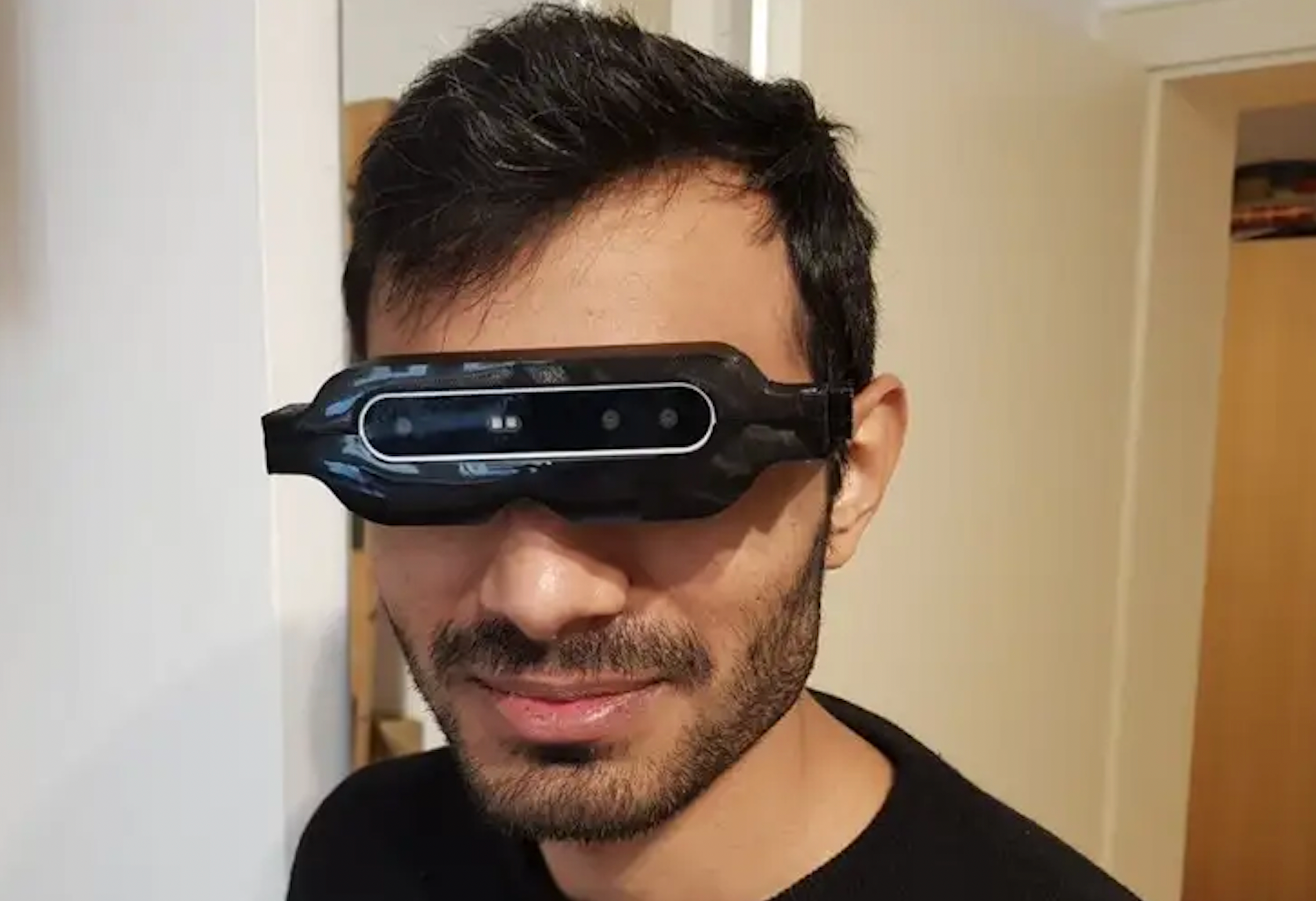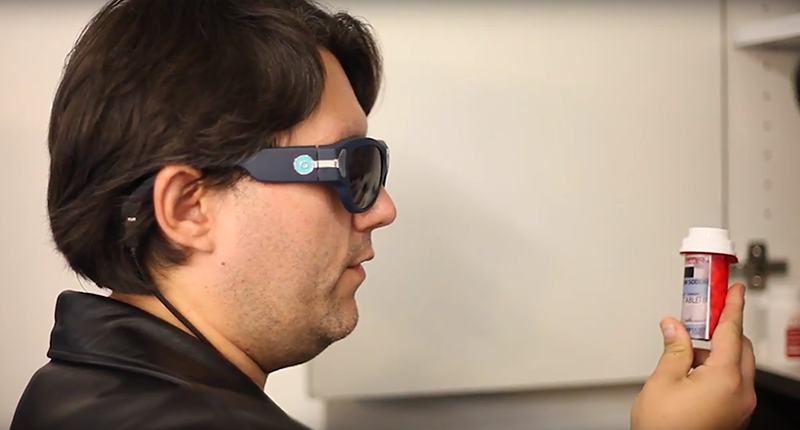Voice-Activated Assistive Devices: Empowering the Visually Impaired
Voice-Activated Assistive Devices: Empowering the Visually Impaired
Blog Article
Discover Cutting-edge Tools Developed for the Visually Damaged
The advancement of cutting-edge tools for the visually impaired stands for a substantial development in ease of access and self-reliance. Technologies such as wise glasses with AI capabilities and mobile applications developed to provide acoustic summaries are improving day-to-day experiences for individuals.
Smart Glasses for Navigation

Smart glasses designed for navigating are transforming the way visually impaired people engage with their atmosphere. These advanced tools use a combination of electronic camera innovation, synthetic intelligence, and acoustic feedback to provide real-time info regarding environments. By utilizing obstacle discovery systems, smart glasses can alert individuals to potential dangers, enabling more secure movement in both acquainted and unknown setups.
The combination of GPS technology additionally boosts navigating capacities, enabling users to get auditory directions as they move. This hands-free method not only fosters freedom but likewise equips visually impaired people to browse urban landscapes with enhanced self-confidence. Additionally, numerous wise glasses are equipped with features that identify sites and street indications, giving contextual info that improves the individual experience.
Moreover, the advancement of these gadgets is continually progressing, with firms working to enhance the accuracy of things recognition and increase the series of navigational features. As clever glasses come to be a lot more easily accessible and cost effective, they hold the prospective to substantially change every day life for aesthetically impaired customers. Eventually, these innovative tools stand for a critical step toward inclusivity, offering improved movement and a better feeling of autonomy for individuals browsing the globe around them.

Mobile Application for Daily Living
Exactly how can mobile applications improve the lives of aesthetically damaged individuals? Mobile apps are reinventing the method aesthetically damaged users navigate their settings, take care of daily jobs, and accessibility information. These applications offer crucial support through different capabilities, fostering independence and enhancing top quality of life.
Numerous cutting-edge mobile applications are created specifically for daily living. For example, applications like Be My Eyes link visually impaired customers with sighted volunteers through video phone calls, enabling them to get real-time help with tasks such as reading tags or browsing unknown spaces. Seeing AI, created by Microsoft, makes use of synthetic knowledge to describe environments, read text, and identify objects, successfully transforming a smart device into a powerful device for daily support.
In addition, navigation applications tailored for the aesthetically damaged, such as Aira and BlindSquare, provide audio-based instructions and environmental information, allowing individuals to traverse their surroundings securely and confidently. Past navigation and immediate assistance, mobile apps additionally sustain organization and job administration, with features that aid individuals set reminders, produce order of business, and track consultations. In summary, mobile applications offer as indispensable resources, equipping visually impaired people to lead even more independent and fulfilling lives.
Wearable Technologies for Help
Empowerment through modern technology is progressively obvious in the world of wearable devices made to assist visually damaged individuals. These cutting-edge devices incorporate effortlessly into daily life, boosting navigation and offering necessary responses to users. For circumstances, smart glasses equipped with video cameras can identify faces and read message aloud, permitting users to connect more confidently in social and expert settings.
Another notable advancement is the usage of haptic responses systems in wearable gadgets. These systems make use of resonances or other responsive signals to convey information about the user's environment, such as obstacles or modifications in terrain, enhancing wheelchair and safety. Wearable technologies also include wristbands that link to smart devices, signaling customers to alerts via refined resonances, therefore enhancing connectivity without reliance on aesthetic hints.
As these innovations remain to advance, they are not only improving self-reliance for visually damaged individuals but also fostering a better feeling of addition in culture. By bridging the gap in between difficulties faced in daily living and the possibility for autonomy, wearable technologies offer as critical devices in the quest for equal rights and empowerment for those with visual problems.
Sound Description Tools
Audio summary devices play a critical duty in boosting access for aesthetically impaired individuals, giving them with the capability to engage with aesthetic media. Wearable technology for low vision. These tools use narrated descriptions of vital visual components in films, television programs, and live efficiencies, ensuring that users can totally comprehend the context and feelings conveyed with visuals
Sound description can be incorporated into numerous systems, consisting more of streaming services, cinema testings, and live theater. Numerous popular streaming services now consist of audio description as an access feature, enabling viewers to choose it quickly. In enhancement to mainstream media, specialized applications likewise exist, offering audio summaries for art exhibits, galleries, and other cultural occasions.
The effectiveness of audio summary rests on the ability of the narrators, that must share visual details succinctly without diminishing the initial sound. Developments in this area are likewise leading the more information way for more individualized experiences, where individuals can readjust the degree of detail and pacing according to their preferences.
Braille Innovations and Devices
Braille devices and developments have substantially transformed the means visually impaired individuals engage with message and details. Modern innovations have actually led to the advancement of flexible tools that improve literacy and independence among users.
In addition, mobile Braille notetakers combine conventional Braille input with modern performances, facilitating note-taking, scheduling, and paper modifying on the go. AI-powered visual aids. These portable tools usually include text-to-speech capacities, linking the space between Braille and auditory information
Furthermore, ingenious Braille printers have emerged, permitting customers to produce Braille labels, files, and academic materials efficiently. This availability promotes greater engagement in academic and expert environments, ultimately promoting inclusivity.
Moreover, study into clever Braille modern technologies remains to broaden. Instruments that incorporate artificial intelligence are being explored to give real-time navigation assistance and contextual information, improving the user experience browse around this web-site in diverse setups. Overall, these innovations show a dedication to equipping visually impaired people with modern technology, guaranteeing they can easily access and involve with the globe around them.

Conclusion
The improvement of innovative tools for the aesthetically damaged dramatically enhances self-reliance and top quality of life. These modern technologies not just foster greater addition however also advertise autonomy in everyday tasks, ultimately adding to a more equitable and accessible society for aesthetically damaged people.
As smart glasses end up being a lot more available and affordable, they hold the prospective to dramatically transform day-to-day life for aesthetically damaged customers. Mobile applications are transforming the way aesthetically damaged users navigate their settings, handle day-to-day jobs, and access info. Apps like Be My Eyes connect aesthetically impaired customers with sighted volunteers using video clip telephone calls, enabling them to obtain real-time aid with tasks such as checking out tags or browsing strange rooms.Furthermore, navigation apps tailored for the visually damaged, such as Aira and BlindSquare, provide audio-based directions and environmental details, allowing users to traverse their environments safely and with confidence.The advancement of innovative devices for the visually impaired substantially improves freedom and high quality of life.
Report this page